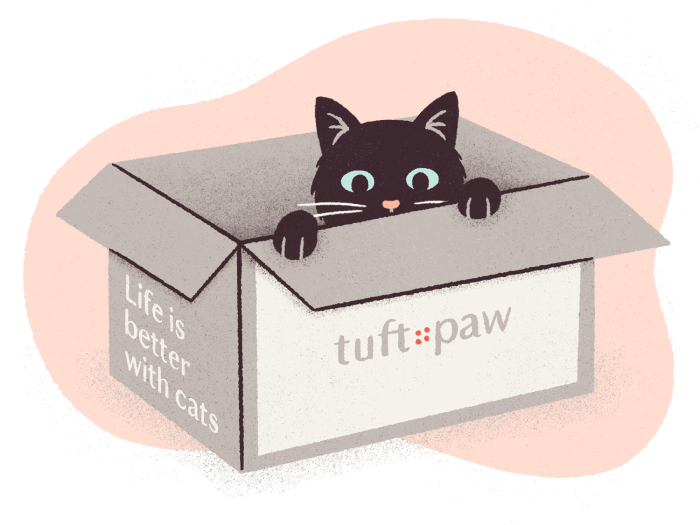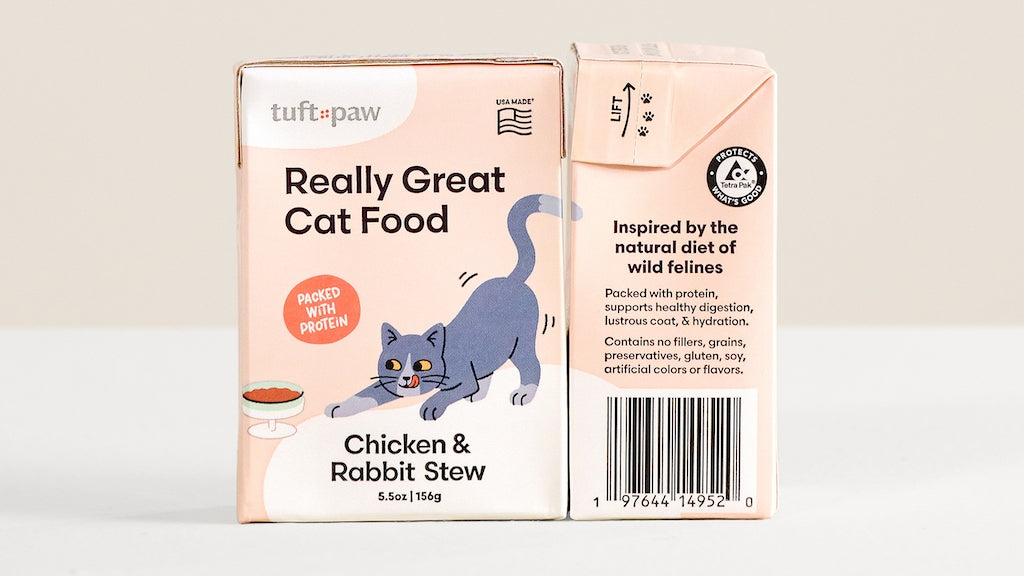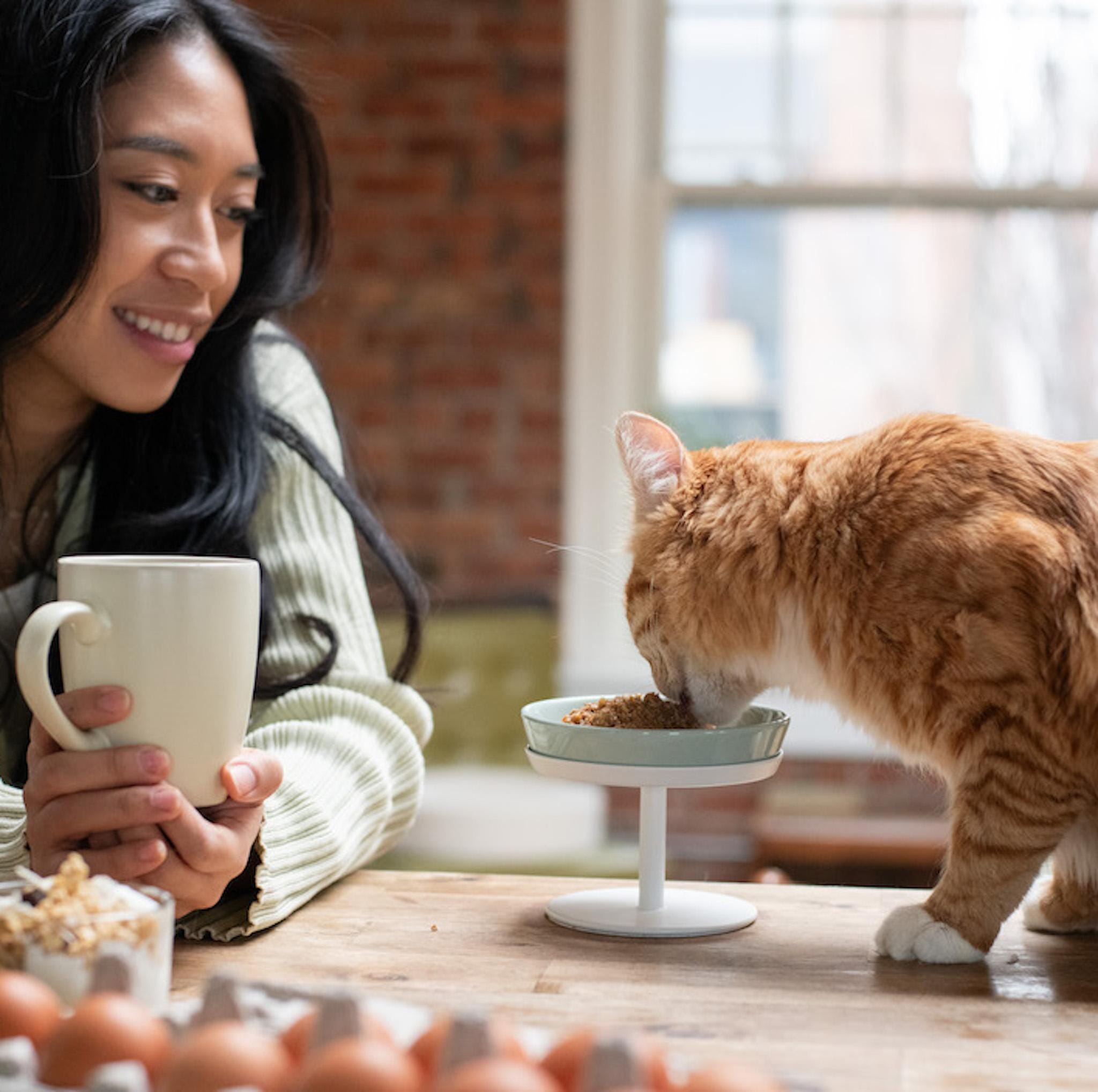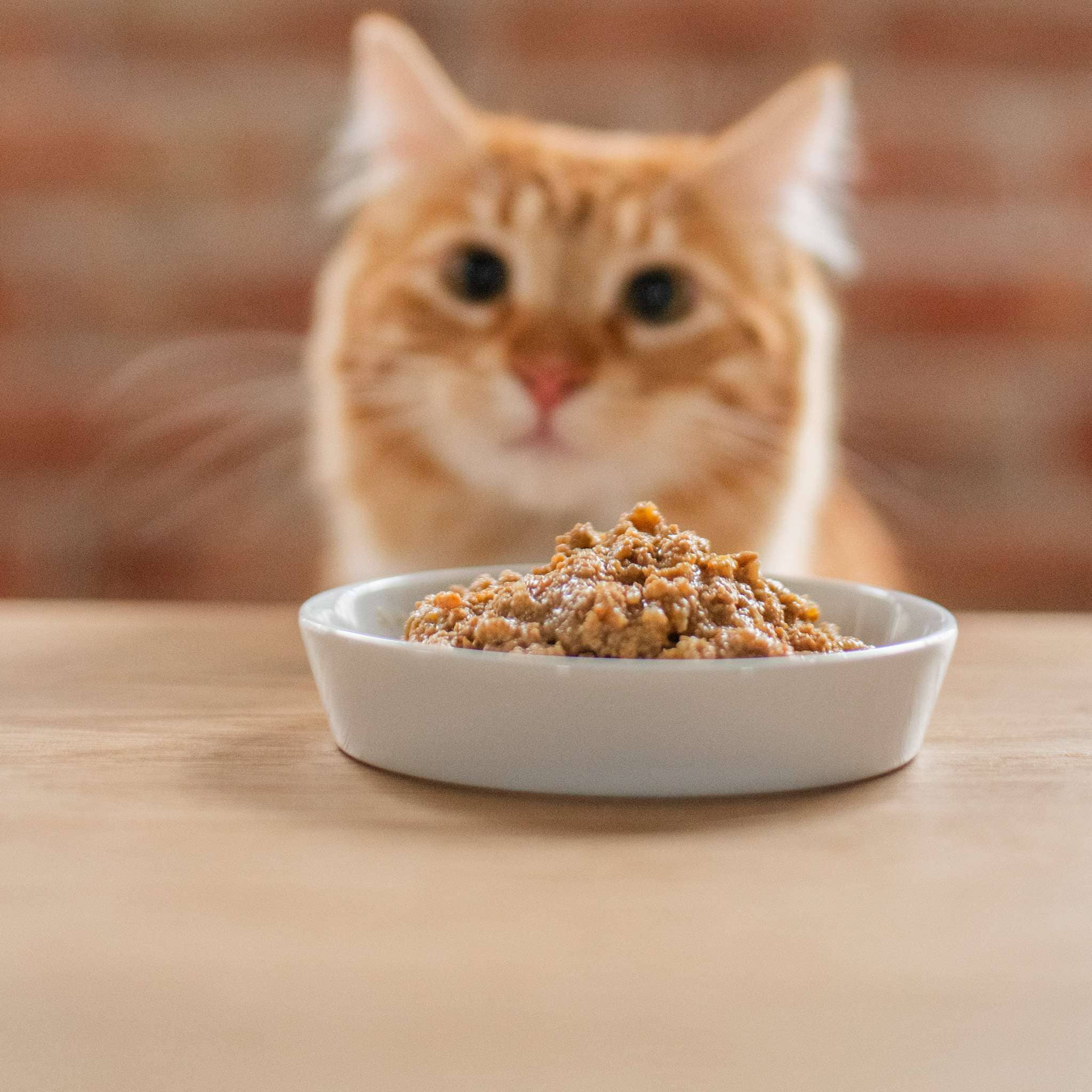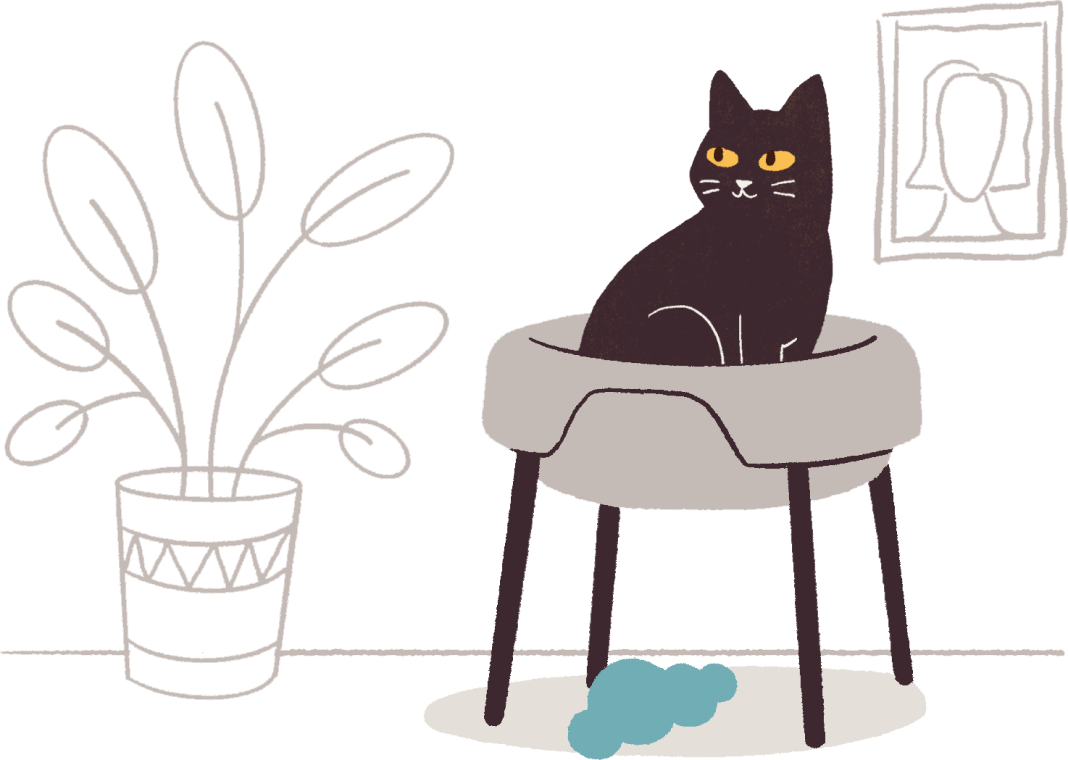Caring for your indoor cat goes beyond providing a cozy window perch and interactive toys. One of the key factors influencing your cat's health and well-being is the food they consume. In this guide, we'll delve into the world of indoor cat food, explain what to look for, and give you our picks for the best indoor cat foods on the market.
Here at tuft + paw, we are cat experts. We're intimately familiar with the cat food features that are most important to cats and cat parents alike. This list is based on consultation with a feline nutritionist, veterinarian, hundreds of online reviews, and our own experience as cat parents.
Tip: See our list of the best kitten foods if you recently welcomed a new feline family member.
Cheat Sheet: The Best Indoor Cat Foods
1) tuft + paw Really Great Cat Food
| Pros | high quality animal protein, first 2 ingredients are chicken-based, low carbohydrates, no fillers, dietary fiber to aid digestion, salmon oil for omega-3s, lower calories for less active cats, affordable price point, high moisture content |
| Cons | not available in pet stores |
| Calories | 138 cal/5.5 oz box = 25 cal/oz |
| Price | $69 for 24 x 5.5 oz box = $0.52/oz |
2) RAWZ 96% Chicken & Chicken Liver Pate Cat Food
| Pros | high quality animal protein, first 3 ingredients are chicken-based, 96% chicken (exclusive of water), dandelion greens for dietary fiber, minimal carbohydrates, high moisture content, many other formula options |
| Cons | not available at major retailers, moderate price point |
| Calories | 188 cal/5.5 oz can = 34 cal/oz |
| Price | $78.99 for 24 x 5.5 oz cans = $0.60/oz |
3) Smalls Ground Bird Cat Food
| Pros | high quality animal protein, first 2 ingredients are chicken-based, high protein content (13%), good moisture content, human-grade ingredients, cod liver oil for omega-3s, convenient subscription service, many other formula options |
| Cons | pricey, not available in stores, food ships frozen |
| Calories | 200 cal/5 oz = 40 cal/oz |
| Price | $4.00 per 5 oz pack = $0.80/oz |
4) Koha Limited Ingredient Diet Rabbit Au Jus for Cats
| Pros | high quality animal protein, 96% rabbit dry matter, novel protein for cats with food allergies, low carbohydrates, very high moisture content, low caloric density for overweight cats, green mussel for omega-3s, many other formula options |
| Cons | pricey, not super high protein content |
| Calories | 139 cal/5.5 oz = 25 cal/oz |
| Price | $96.76 for 24 x 5.5-oz cans = $0.73/oz |
5) Nulo Freestyle Beef & Lamb Grain-Free Canned Cat Food
| Pros | high quality animal protein, first 6 ingredients are animal sources, low carbohydrates, high moisture content, affordably priced, low caloric density for overweight cats, menhaden fish oil for omega-3s, many other formula options |
| Cons | contains guar gum, not all cats like beef |
| Calories | 186 cal/5.5 oz = 34 cal/oz |
| Price | $54.96 for 24 x 5.5-oz cans = $0.42/oz |
6) Wellness CORE Grain-Free Indoor Canned Cat Food
| Pros | high quality animal protein, first 6 ingredients are animal sources, good moisture content, low caloric density for overweight cats, many other formula options |
| Cons | contains less digestible pea protein, contains gums (guar, cassia, xanthan) |
| Calories | 148 cal/5.5 oz = 27 cal/oz |
| Price |
$83.76 for 24 x 5.5-oz cans = $0.63/oz |
What is Indoor Cat Food?
Indoor cats do not need their own specially designed foods, but there is a particular aspect of their lifestyle that should be considered: indoor cats are generally less active than outdoor cats. Therefore, indoor cats burn fewer calories and are more likely to become overweight, so choosing a less calorie-dense food could be a smart choice. Beyond that, indoor cats should be fed a diet of high quality animal protein like their outdoor counterparts.
Of course, every cat is different, so it’s up to you to determine what your cat’s specific needs are. Are they prone to overeating? Are they a slow-moving senior or an energetic kitten? Will they only eat certain foods? These are important questions that should be factored into your choice of cat food.
 Really Great Cat Food & Dock Bowl and Stand by tuft + paw
Really Great Cat Food & Dock Bowl and Stand by tuft + paw
What to Look for In Indoor Cat Food
Lower Caloric Density
Indoor cats often lead less active lives than outdoor cats, making calorie management crucial. Opt for cat food with lower caloric density to prevent weight gain and obesity. Some formulas are even tailored to meet the energy needs of a less active cat without the risk of excess calorie intake. Wet food is great for this purpose because it’s nutritious, filling, and hydrating, but less calorically dense than dry kibble.
High-Quality Animal Protein
Cats are obligate carnivores, and their diets should reflect this biological necessity. Look for cat food with a high-quality animal protein source as the primary ingredient (e.g. chicken, chicken liver). A high protein cat food also helps cats feel full for longer (compared to a high carb meal) which can help with weight management in indoor cats.
Be discerning about protein digestibility; cats benefit most from easily digested animal proteins such as meat and organs. Avoid foods that rely on animal “byproducts” and “meal” for their protein content, as these can contain less digestible components like connective tissue and bones.
 Really Great Cat Food & Dock Bowl and Stand by tuft + paw
Really Great Cat Food & Dock Bowl and Stand by tuft + paw
Low in Carbohydrates
All cat diets should prioritize protein and healthy fats over carbohydrates. Cats in the wild consume minimal carbs, and mimicking this in their diet supports their nutritional needs. While cats are capable of digesting carbohydrates, their digestive systems are far better adapted to digesting and absorbing nutrients from protein sources.
Tip: Check out our list of the best low carb cat foods and best grain-free cat foods (yes those are different things!)
Sufficient Moisture Content
Domestic cats are descended from desert-dwelling ancestors who got their water from eating prey rather than drinking from water sources. Therefore, cats have a low thirst drive and may not drink enough water at home to stay adequately hydrated. To address this, choose cat food with a high moisture content. Wet cat food provides an excellent source of hydration and may help prevent urinary issues down the road.
Added Fiber Sources
Indoor cats generally spend more time grooming than outdoor cats, so they are at higher risk of hairballs. Cat food formulated specifically for indoor cats will often have increased fiber to help move hairballs through the digestive system. Typically you want to look for ingredients like chicory, pumpkin, inulin, and dandelion greens for this purpose. Added dietary fiber is also a common feature of the best cat foods for sensitive stomachs.
Meets AAFCO Nutritional Standards & Life Stage Requirements
When selecting cat food, always check if it meets the nutritional standards set by the Association of American Feed Control Officials (AAFCO). This ensures that the food is formulated to provide a complete and balanced diet for your cat. AAFCO compliance is a crucial indicator of the food's quality and suitability for your cat's overall health.
Additionally, check the AAFCO statement on the label to ensure it’s appropriate for your cat's specific life stage. A cat’s different life stages have different nutritional requirements. For example, kittens need more calories than adult cats to support their rapid growth, while senior cats benefit from diets that maintain muscle mass.
Here are the key AAFCO terms you’ll see on a label:
- Complete and Balanced – “Complete” means the product contains all the nutrients required. “Balanced” means the nutrients are present in the correct ratios.
- “Growth” life stage – Early life stage when kittens have greater nutritional needs to fuel their growth and development.
- “Maintenance” life stage – Adult cats who are no longer growing only require nutrition for maintenance of a healthy body weight.
- “Gestation/lactation” life stage – Pregnant/mother cats who need to feed their kittens have greater nutritional needs than non-pregnant, non-lactating adult cats.
- All life stages – This means the food is appropriate for both kittens and adult cats, though feeding directions will vary depending on your cat’s life stage. These foods can help take the guesswork out of switching from kitten to adult cat food.
Our Criteria for Choosing the Best Indoor Cat Food
- Meets AAFCO Standards – All foods on this list are formulated to meet the AAFCO Cat Food Nutrient Profiles for either adult cats, growth and reproduction, or all life stages.
- High quality animal protein – All foods on this list prioritize animal proteins as their first ingredients rather than animal byproducts.
- Healthy fats – Quality cat food should contain healthy fats from animal sources, such as meat or fish oil.
- Calorie density – Indoor cats should generally eat a lower calorie diet due to their lower activity levels.
- Moisture content – High moisture content in food helps cats avoid the health problems associated with dehydration.
- Carbs & plant-based content – Cats are obligate carnivores who should be eating primarily animal protein, so we prefer foods with low carbohydrate content and low plant material content.
- Price
Deep Dive: The Best Indoor Cat Foods
1) tuft + paw Really Great Cat Food
Price: $69 for 24 x 5.5 oz box = $0.52/oz
Calories: 138 cal/5.5 oz box = 25 cal/oz
Life Stage: all life stages
Disclaimer: Yes, we included our own cat food here. This is because we truly think it performs excellently compared to other cat foods on the market. We subjected it to the same scrutiny as every other food on this list and asked for honest opinions from experts and cat parents.
Our pick for the best cat food for indoor cats is tuft + paw’s Really Great Cat Food. We made sure this formula has everything we look for in a wet cat food. First of all, it prioritizes easily digestible animal protein with chicken as the primary meat source, and rabbit as a secondary source. Together these two meat sources provide essential amino acids and fatty acids, particularly taurine and arachidonic acid which are both especially vital to cats. The salmon oil provides a boost of omega-3s to aid immune function, reduce inflammation, and assist in brain and eye health. There are no filler carbs, and each plant-based ingredient is there to provide either specific vitamins, minerals, antioxidants, or dietary fiber. Fibrous ingredients like pumpkin puree and flaxseed are especially important for indoor cats who groom frequently and need help to pass hairballs. Really Great Cat Food has a slightly lower caloric density which helps prevent excess weight gain if your cat is less active. Given the quality of ingredients, it’s also quite affordable at $0.52/oz!
|
Ingredients: chicken, chicken broth, pumpkin puree, rabbit, carrots, ground golden flaxseed, natural flavor, tricalcium phosphate, agar-agar, salmon oil, dandelion greens, potassium chloride, vitamins , magnesium amino acid chelate, choline chloride, taurine, minerals , sea salt. |
|
Guaranteed Analysis
|
Dry Matter Analysis
|
| Pros | Cons |
|
|
2) RAWZ 96% Chicken & Chicken Liver Pate Cat Food

Price: $78.99 for 24 x 5.5 oz cans = $0.60/oz
Calories: 188 cal/5.5 oz can = 34 cal/oz
Life Stage: all life stages
Our runner-up for the best cat food for indoor cats is RAWZ 96% Chicken and Chicken Liver Pate. As the name suggests, 96% of this recipe is chicken (excluding the water content) and the brand reports that 51.67% of the dry matter in this food is protein. This is exactly the kind of high-protein, animal based recipe we look for in cat food. RAWZ has many different formulas available, we simply chose this one because most cats love chicken. Beyond chicken and necessary supplements, the only other notable ingredients are fenugreek seeds and dandelion greens, which are suitable for cats and provide a bit of dietary fiber to aid digestion. There are no gums or filler carbs. A nice bonus is that RAWZ donates 100% of their profits to organizations that support people with traumatic brain and spinal cord injuries, including providing them with service dogs. At $0.60 per ounce, it’s not cheap but is fairly priced considering the quality of the ingredients. RAWZ is also not the easiest brand to find because they’re not at any big box stores or major online retailers. You’ll have to find them at a smaller pet store, whether in person or online.
|
Ingredients: Chicken, Chicken Liver, Chicken Broth, Fenugreek Seeds, Dandelion Greens, Natural Flavor, Tricalcium Phosphate, Potassium Chloride, Choline Chloride, Salt, Taurine, Magnesium Proteinate, Zinc Proteinate, Iron Proteinate, Kelp, Niacin Supplement, Vitamin E Supplement, Copper Proteinate, Vitamin A Supplement, Manganese Proteinate, Sodium Selenite, Thiamine Mononitrate, Calcium Pantothenate, Pyridoxine Hydrochloride, Vitamin D3 Supplement, Riboflavin Supplement, Vitamin B12 Supplement, Folic Acid, Calcium Iodate, Biotin. |
|
Guaranteed Analysis
|
Dry Matter Analysis
|
| Pros | Cons |
|
|
3) Smalls Ground Bird Cat Food
 Credit: Smalls
Credit: Smalls
Price: $4.00 per 5 oz pack = $0.80/oz
Calories: 200 cal/5 oz = 40 cal/oz
Life Stage: all life stages
Smalls has become a popular brand among cat parents for their high quality cat food and convenient subscription service. Like RAWZ, the ingredients lists for all their formulas are high in animal protein and avoid filler carbs and gum-based thickeners. They use human-grade ingredients and every recipe is suitable for all life stages. At 13% crude protein, Smalls Ground Bird recipe has the highest crude protein content on this list. We like the limited use of plant-based ingredients and added cod liver oil for a boost of omega-3 fatty acids.
However, Smalls is the most expensive food here at $0.80 per ounce, which may not be within every cat parent’s budget. It’s also only available on Smalls’ website and ships frozen, so you’ll have to thaw the food the night before feeding it to your cat. These are minor inconveniences but still things to consider.
|
Ingredients: Chicken, chicken liver, green beans, water sufficient for processing, dried yeast, tricalcium phosphate, kale, magnesium proteinate, potassium chloride, choline chloride, dandelion greens, dried kelp, taurine, zinc proteinate, iron proteinate, cod liver oil, salt, niacin supplement, vitamin E supplement, vitamin A supplement, copper proteinate, manganese proteinate, thiamine mononitrate, d-calcium pantothenate, pyridoxine hydrochloride, vitamin D3 supplement, riboflavin supplement, vitamin B12 supplement, folic acid, sodium selenite, biotin.
|
|
Guaranteed Analysis
|
Dry Matter Analysis
|
| Pros | Cons |
|
|
4) Koha Limited Ingredient Diet Rabbit Au Jus for Cats
 Credit: KOHA Pet
Credit: KOHA Pet
Price: $96.76 for 24 x 5.5-oz cans = $0.73/oz
Calories: 139 cal/5.5 oz = 25 cal/oz
Life Stage: adult maintenance
For cats with allergies to conventional meats, we like Koha’s Limited Ingredient Diet Rabbit Au Jus wet food. Rabbit is a novel protein which is not found in most cat foods, and most cats are unlikely to have a sensitivity to it. In the wild, small mammals and rodents make up a significant portion of a cat’s diet, so rabbit is a biologically appropriate protein source. Like our previous picks, this food is high in animal protein and contains minimal carbohydrates, but it also has a particularly high water content and low caloric density. This makes it an awesome choice for cats who struggle to stay hydrated or are overweight.
Given the high quality ingredients, this food is on the pricier side at $0.73 per ounce. It also might not have enough fiber for indoor cats who get frequent hairballs.
|
Ingredients: Rabbit, Water Sufficient For Processing, Ground Flaxseed, New Zealand Green Mussel, Agar Agar, Pumpkin, Potassium Chloride, Choline Chloride, Salt, Taurine, Dried Kale, Cranberries, Ginger, Turmeric, Iron Proteinate, Zinc Proteinate, Vitamin E Supplement, Thiamine Mononitrate, Copper Proteinate, Manganese Proteinate, Sodium Selenite, Niacin Supplement, D-Calcium Pantothenate, Pyridoxine Hydrochloride, Riboflavin Supplement, Vitamin A Supplement, Biotin, Potassium Iodide, Vitamin D3 Supplement, Vitamin B12 Supplement, Folic Acid. |
|
Guaranteed Analysis
|
Dry Matter Analysis
|
| Pros | Cons |
|
|
5) Nulo Freestyle Beef & Lamb Grain-Free Canned Cat Food
 Credit: Chewy
Credit: Chewy
Price: $54.96 for 24 x 5.5-oz cans = $0.42/oz
Calories: 186 cal/5.5 oz = 34 cal/oz
Life Stage: all life stages
Most cats love chicken, but if they have an allergy to it or just prefer other meats, this Nulo Freestyle Beef & Lamb Canned Cat Food could be a great option. It features a lot of different protein sources: beef, turkey, whitefish, and lamb! This gives it a unique flavor that may be appealing to cats who aren’t interested in other foods. We also like the low carbohydrate content, added fish oil for omega-3s, and high moisture content. Cat parents will definitely like the affordable price point too, at $0.42 per ounce.
Unfortunately, we don’t love that this food contains guar gum, a thickener that’s not very suitable for cat digestion. There’s also the fact that some cats don’t like beef and it’s not a protein source they would be eating in the wild. This is why we recommend it as an alternative if your cat rejects other types of food.
|
Ingredients: Beef, Beef Liver, Turkey, Beef Broth, Whitefish, Lamb, Natural Flavor, Guar Gum, Potassium Chloride, Agar Agar, Choline Chloride, Taurine, Cranberries, Pumpkin, Menhaden Fish Oil (Preserved With Mixed Tocopherols), Tomato, Dried Kelp, Yucca Schidigera Extract, Salt, Manganese Sulfate, Iron Proteinate, Sodium Carbonate, Zinc Proteinate, Thiamine Mononitrate, Vitamin E Supplement, Copper Proteinate, Manganese Proteinate, Sodium Selenite, Niacin Supplement, d-Calcium Pantothenate, Pyridoxine Hydrochloride, Riboflavin Supplement, Vitamin A Supplement, Biotin, Potassium Iodide, Vitamin D3 Supplement, Vitamin B12 Supplement, Folic Acid, Rosemary Extract. |
|
Guaranteed Analysis
|
Dry Matter Analysis
|
| Pros | Cons |
|
|
6) Wellness CORE Grain-Free Indoor Canned Cat Food
 Credit: Chewy
Credit: Chewy
Price: $83.76 for 24 x 5.5-oz cans = $0.63/oz
Calories: 148 cal/5.5 oz = 27 cal/oz
Life Stage: adult maintenance
Wellness CORE Grain-Free Indoor Canned Cat Food is formulated specifically for indoor cats who need a lower calorie food with a decent moisture content. The first six ingredients are all from animal sources, which we love to see! Like the Koha Limited Ingredient formula, this food is labeled for the “maintenance” life stage, which means it’s appropriate for adult cats but not for fast-growing kittens. It’s also moderately priced at $0.63 per ounce, making it a cheaper option than the Koha food.
Unfortunately, there are a couple drawbacks to this food. First of all, it contains pea protein and chicken meal, both of which add crude protein to the recipe but are not the most digestible protein sources. There’s also the inclusion of guar, cassia, and xanthan gums as thickening agents.
|
Ingredients: Chicken, Chicken Liver, Chicken Broth, Turkey Broth, Chicken Meal, Turkey, Pea Protein, Dried Ground Peas, Natural Flavor, Cranberries, Pea Fiber, Ground Flaxseed, Guar Gum, Tricalcium Phosphate, Potassium Chloride, Choline Chloride, Taurine, Cassia Gum, Xanthan Gum, Dried Kelp, Chicory Root Extract, Yucca Schidigera Extract, Salt, Alfalfa Meal, Iron Proteinate, Zinc Proteinate, Thiamine Mononitrate, Vitamin E Supplement, Copper Proteinate, Manganese Proteinate, Sodium Selenite, Niacin, d-Calcium Pantothenate, Pyridoxine Hydrochloride, Riboflavin Supplement, Vitamin A Supplement, Biotin, Potassium Iodide, Vitamin D3 Supplement, Vitamin B12 Supplement, Folic Acid. |
|
Guaranteed Analysis
|
Dry Matter Analysis
|
| Pros | Cons |
|
|
Indoor Cat Food FAQs
What should I look for in indoor cat food?
Look for formulas with lower caloric density, high-quality animal proteins, minimal carbohydrates, sufficient moisture content, and compliance with AAFCO nutritional standards to meet the needs of indoor cats.
Is wet or dry food better for indoor cats?
Both wet and dry food can be suitable for indoor cats, and a diet consisting of both has many health benefits. Wet food helps with hydration and weight management, while dry food may assist with dental health and provides more calories. Choose based on your cat's preferences and specific health needs.
How much should I feed my indoor cat?
The recommended daily caloric intake varies based on factors like age, weight, and activity level. Check the packaging of your cat food for feeding instructions. You can also consult your veterinarian to determine the appropriate portion size for your indoor cat to maintain a healthy weight.
Are grain-free diets beneficial for indoor cats?
While indoor cats don't have a natural requirement for grains, the emphasis should be on high protein and balanced nutrition. Some cats may thrive on grain-free diets, but it's essential to prioritize high-quality protein, low carbs, and overall nutritional balance.
What are the risks of overfeeding indoor cats?
Overfeeding can lead to obesity, which increases the risk of various health issues such as diabetes and joint problems. Monitor your cat's weight, adjust portion sizes accordingly, and incorporate playtime to maintain a healthy lifestyle.
Conclusion
Providing the best cat food for your indoor cat requires thoughtful consideration of their unique lifestyle and nutritional needs. In general, a great indoor cat food will have moderate caloric density, high-quality animal proteins, low carbohydrates, sufficient moisture content, and adherence to AAFCO standards. Our top pick is tuft + paw’s Really Great Cat Food for it’s mix of high quality ingredients and affordable price point. RAWZ 96% Chicken & Chicken Liver and Smalls Ground Bird are two great options for most cats with their palatable chicken recipes and high protein. If your cat does like chicken, Koha Limited Ingredient Rabbit Au Jus and Nulo Freestyle Beef & Lamb are great alternatives. Try out a few different foods and see which one your cat likes best. Good luck!
